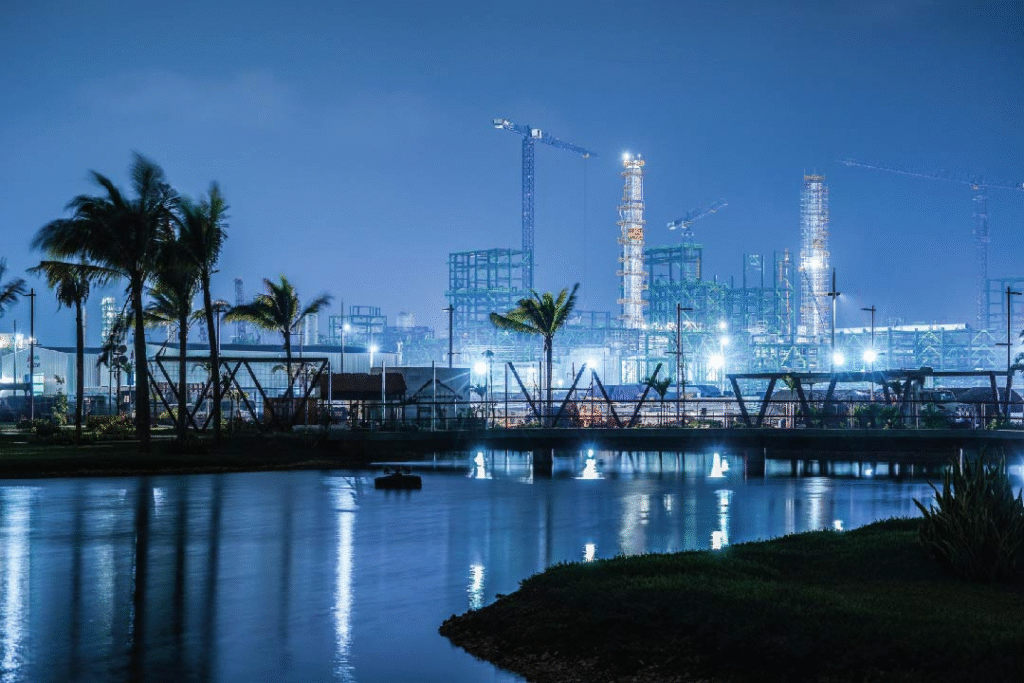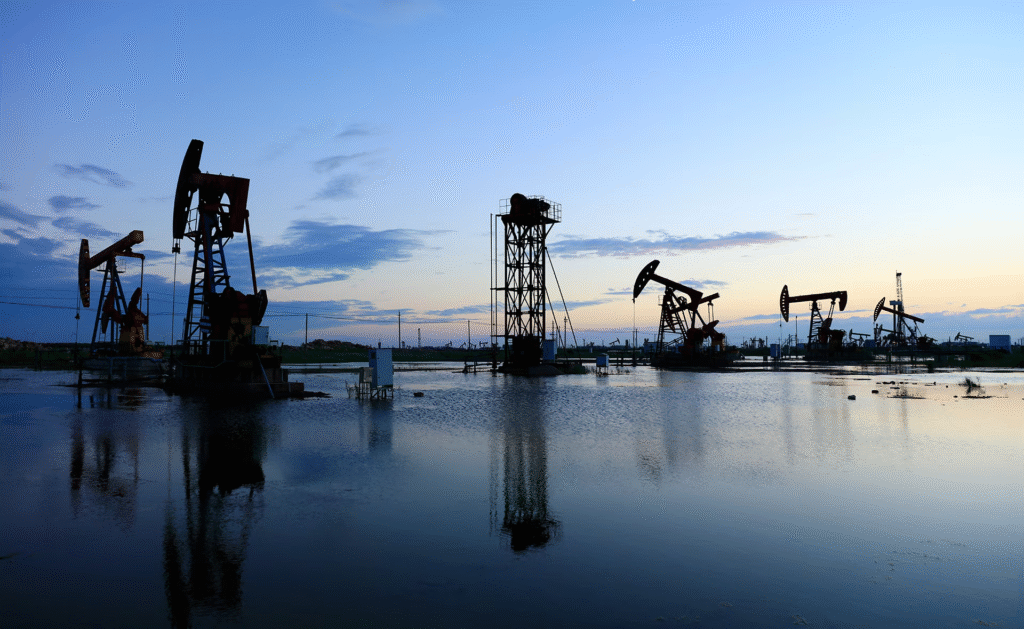During her morning press conference on July 7, 2025, President Claudia Sheinbaum announced that the Olmeca Refinery—better known as Dos Bocas—is now operational, producing approximately 200,000 barrels per day. At the same time, it was revealed that Pemex has shipped more than 3.1 billion pesos worth of crude oil and refined fuels to Cuba, sparking concern among experts about potential strain in Mexico’s relationship with the United States.

What is the Dos Bocas Refinery?
Located in Paraíso, Tabasco, the Dos Bocas refinery is one of the flagship projects of Mexico’s Fourth Transformation movement. Originally launched by former president Andrés Manuel López Obrador, the initiative has been continued by President Sheinbaum as part of her broader strategy for energy self-sufficiency.
With an investment exceeding $16.8 billion USD, the refinery was designed to process up to 340,000 barrels of oil per day and convert it into gasoline, diesel, and other fuels. Its main goal is to reduce Mexico’s reliance on imported refined products—especially from the United States.
How Does Dos Bocas Help or Hurt Mexico?
Benefits:
- Energy Independence: The government aims for Mexico to refine its own crude to cut down on fuel imports.
- Price Stabilization: Domestic production could help stabilize or even lower gas prices nationwide.
- Regional Development: The project has created jobs and infrastructure in Mexico’s southeast.
- Political Appeal: It strengthens Morena’s energy sovereignty narrative.
Drawbacks:
- Cost Overruns: The original budget was exceeded by billions of dollars.
- Delayed Start: Though inaugurated in 2022, the refinery only began real operations by mid-2024.
- Environmental Concerns: Activist groups have reported damage to local ecosystems.
- Financial Risk: If the plant fails to reach full capacity, it may not recover its investment, further burdening Pemex.
Mexico Sends Oil to Cuba: Solidarity or Geopolitical Risk?
Since 2023, Pemex has regularly shipped crude and fuel to Cuba. In the first quarter of 2025 alone, it delivered 19,600 barrels per day of crude oil and 2,000 barrels of refined products, totaling an estimated value of 3.1 billion pesos.
Although the Mexican government describes the shipments as humanitarian aid amid Cuba’s energy crisis, experts warn these actions may be perceived as political support for the Cuban regime—potentially clashing with U.S. sanctions against Havana.

How Will the Tension with the U.S. Be Addressed?
According to sources from the federal government and Pemex:
- Mexico aims to preserve diplomatic balance through open dialogue with Washington, stressing that the shipments are legally authorized commercial operations and don’t violate international agreements.
- President Sheinbaum stated her foreign policy will be guided by “respect, sovereignty, and cooperation,” without directly confronting the U.S.
- Analysts suggest Mexico might reduce the frequency or volume of shipments to Cuba, while strengthening economic ties with other partners like Brazil, China, or Venezuela as a counterbalance.
- In Congress, opposition lawmakers have called for special audits of Pemex to assess the legality and impact of these transactions.
Dos Bocas stands as one of the current administration’s most ambitious projects. While it’s beginning to show production results, technical and financial hurdles remain. At the same time, oil shipments to Cuba reflect a policy of international solidarity that could turn into a diplomatic flashpoint if not carefully managed. President Sheinbaum’s challenge will be to strike a delicate balance between energy sovereignty, humanitarian support, and geopolitical stability.

Quick Facts
What is the Dos Bocas Refinery?
A facility in Tabasco designed to process 340,000 barrels of crude oil per day.
Is Dos Bocas currently operational?
Yes, according to President Sheinbaum, it’s producing about 200,000 barrels per day.
How much did it cost?
Over $16.8 billion USD.
What type of oil is sent to Cuba?
Maya crude and refined products like diesel and gasoline.
What’s the risk with the U.S.?
Possible sanctions or diplomatic tensions.
What do Mexico and Cuba gain?
Cuba receives much-needed energy, and Mexico boosts its regional influence.
How does the government plan to handle it?
Through diplomatic dialogue with the U.S., legal reviews, and possibly scaling back shipments.
When did Dos Bocas actually begin operations?
While it was inaugurated in 2022, true operations began in 2024.
Why was Dos Bocas recently shut down?
Due to an electrical incident and crude oil contamination with salt.